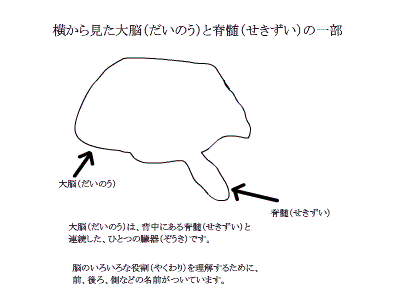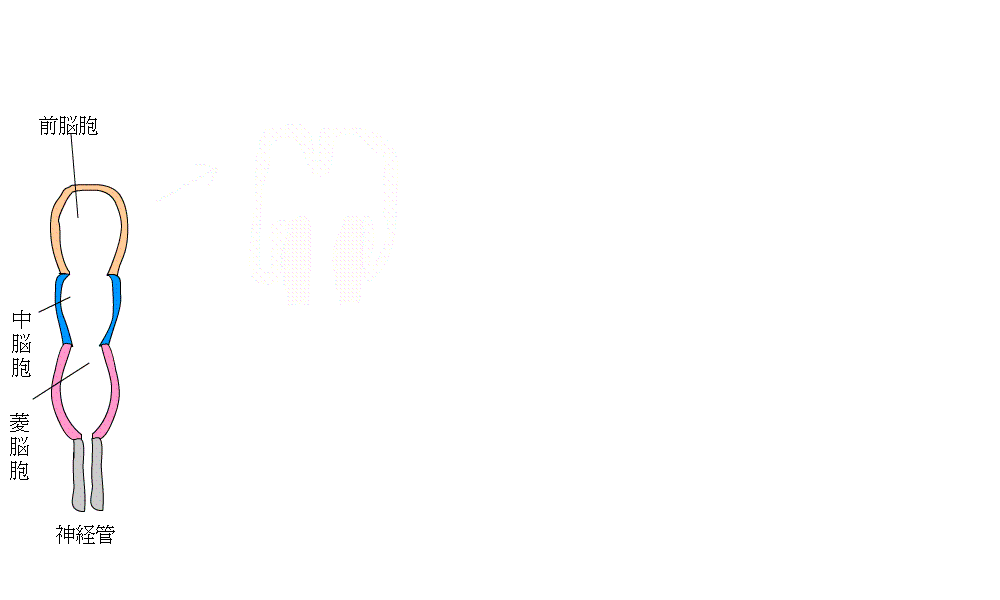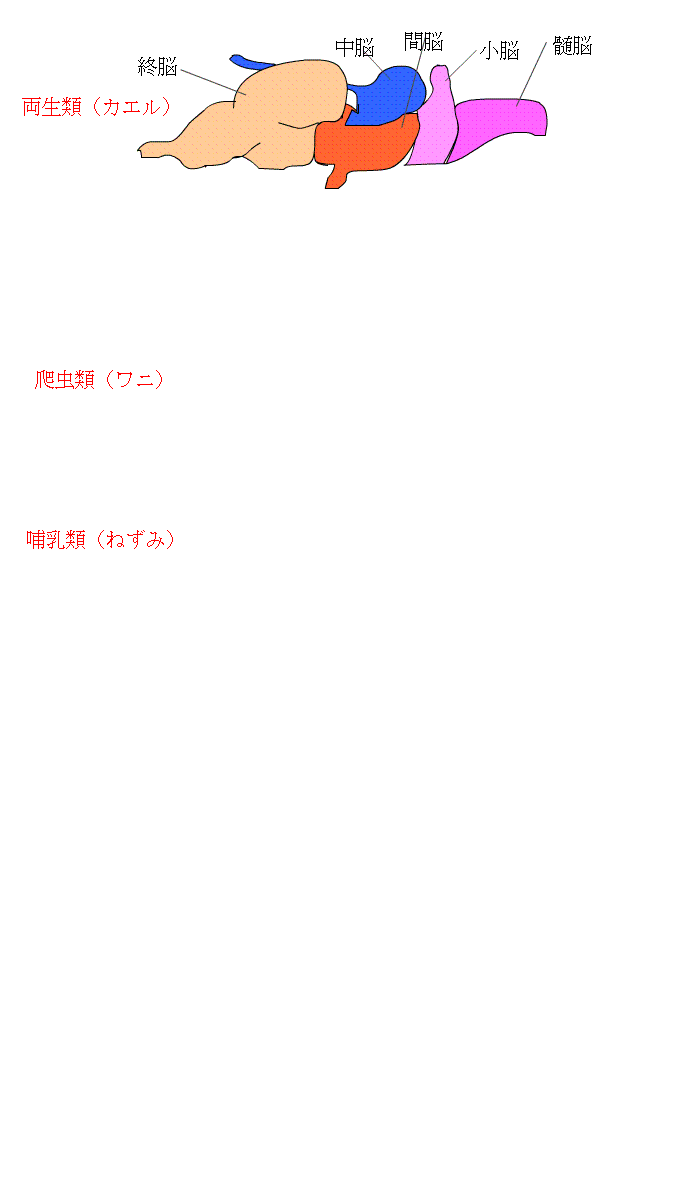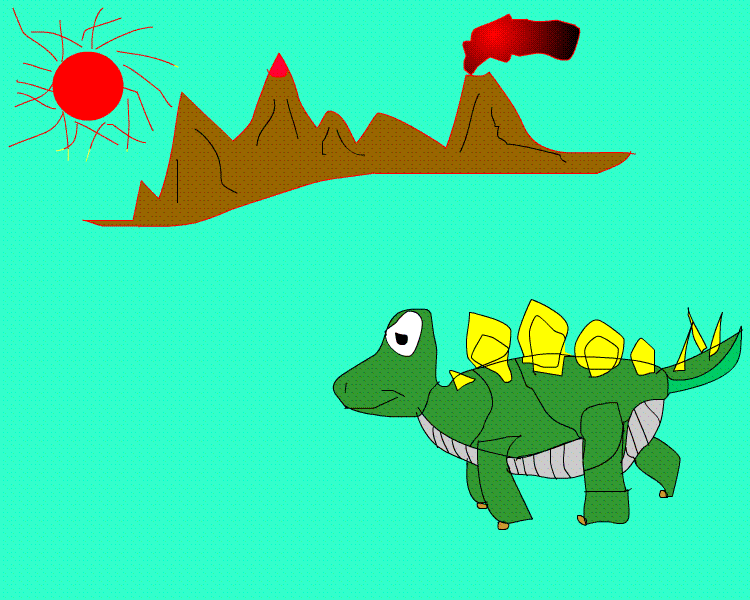Points of this page
The human brain is roughly divided into four types: the cerebrum, diencephalon, brain stem, and cerebellum. The diencephalon is divided into the thalamus and hypothalamus, and the brain stem is divided into the midbrain, pons, and medulla oblongata. The midbrain, pons, and medulla oblongata are like the trunks that support the cerebrum, including the diencephalon, and are called the brainstem.
|

The weight of the cerebrum is about 1.3 to 1.6 kg for adults.
The main components of the brain are "nerve cells."
Nerve cells are special cells that exchange information by sending out electrical signals.
The number of nerve cells is tens of billions in the cerebrum, 100 billions in the cerebellum, and hundreds of billions in the whole brain.
According to a report that the cerebrum has several billion nerve cells, it is said that the number of cerebral nerve cells is 14 billion and the number of surrounding glial cells is 9 times of this.
By the way,
the total cell number of a person weighing 60 kg is about 60 trillion. Of these, the brain cells are just a few. The most numerous cells are those related to immunity.。
Let's see it again.
The frontal lobe, parietal lobe, occipital lobe, and temporal lobe are anatomically named to understand the various functions of one cerebrum. The cerebrum is one and is connected to the spinal cord.。 |
そ
Then, how are the brains of vertebrate animals such as fish, frogs, turtles, and sparrows? And how has human brain evolved ?
Before talking about it, let me explain nervous system。
、The nervous system is made up of the central nervous system and the peripheral nervous system. The central nervous system consists of the brain and spinal cord. The peripheral nervous system is a bundle of nerve fibers distributed outside the skull and spinal column and consists of cranial nerves, spinal nerves, and autonomic nerves. There are 12 pairs of cranial nerves from the brain tissue, and they are not the central nerves.
In the central nervous system, the?brain?develops from?bulging?neural tubes, so animals with neural tubes have the brain.?Let's see it with anime.?
Changed from Normal structure and function of human body VIII and the diagram of nervous system (1)

gThe first origin of the brain starts from the protochordata animals.。
The forebrains becomes the telencephalon and diencephalon, and the rhombocerebrums becomes the hindbrain and myelencephala.
The hindbrain becomes the cerebellum and pons, the myelencephala becomes the medulla oblongata, and the spinal cord follows the tail.
Next, let's see the evolution of the brain in animation in the order of frog, crocodile, and rat. Changed fromNormal structure and function of human body VIII and the diagram of nervous system (1)

As animals become more complicated, the proportion of telencephalon increases.。
In humans,?telencephalon is 85%?, diencephalon 1.9%, midbrain 0.8%, cerebellum 0.5%, pons 0.5%, medulla oblongata 0.5%, spinal cord 2%.
Why has it evolved from a small brain to a large brain? ? ? ?

The dinosaur appeared about 230 million years ago. Dinosaurs are large reptiles that were diurnal. It seems that they were active in the daytime and slept at night.
Around the same time, the early mammals that evolved from reptiles were also alive.They were nocturnal, and stayed calm in the daytime making a bare living. Due to the nocturnal nature, the senses of seeing, listening, and smelling became sharp, and the structure of the brain that related them had developed. It is called association area.
This association area, especially the frontal lobe association area, grew in the process of evolving from reptiles to mammals and from monkeys to humans. It accounts for about 30% of the cerebral neocortex .
In the animation below, you can see the rough process of brain evolution.
Changed from Normal structure and function of human body VIII and the diagram of nervous system (1)

In the animation, the?blue part?indicates the association area of ??the frontal lobe.
In the anime, "New World Monkey" is a platyrrhine that lives in South America and has nostrils wide side to side. The reason of the name "New World monkey" is the South American continent was called "the New World".
On the other hand, since Asia, Europe, and Africa were called "the Old World", the monkeys that live there are called "Old World monkeys." These monkeys are catarrhine,which nostrils are narrow. It is said that the old world and the new world were separated 30 to 40 million years ago.
Apes include the following living animals:
- Lesser ape):gibbonandHylobatidaeincluding theSymphalangus syndactylus
- Great ape):orangutan, gorilla, chimpanzee, bonobo(+human)
To Medicine for the child who learns by anime

